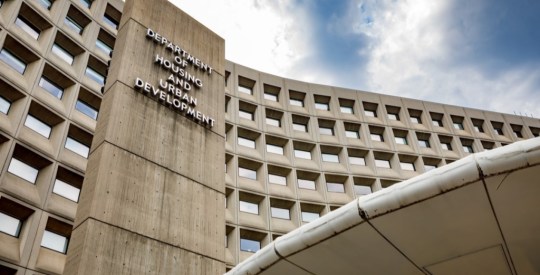Super-regional banks Fifth Third Bancorp (FITB) and KeyCorp (KEY) swung into the red during the second quarter, as credit costs exacted their pound of flesh from a regional banking sector that’s increasingly looking vulnerable to continued deterioration in the mortgage and housing markets. Cincinnati-based Fifth Third said that it lost $202 million, or 37 cents a share, during the second quarter; that compares to earnings of $376 million in the year-ago period. The bank’s woes underscore how credit trends are trumping core growth for many regionals: Fifth Third took a charge related to leveraged leases totaling $0.42 per share, while non-performing assets and charge-offs continued to increase. Net charge-offs rose to $344 million, up 238 percent from year-ago levels — and up 25 percent in one quarter alone, mostly due to a huge jump in commercial loan charge-offs. Non-performing assets rose to $2.2 billion, up from $1.6 billion at the end of Q1; NPAs now represent 2.56 percent of total loans. In contrast, Fifth Third’s allowance for losses reached $1.58 billion, or 1.85 percent of loans; should non-performing assets continue to charge ahead (highly likely), further loss provision expenses would seem likely to be the result. Regions cuts dividend Capital preservation has quickly returned to the center stage after an earlier spate of better-than-expected earnings had some investors weighing a possible end of the housing mess; Alabama-based Regions Financial Corp. (RF) cut its dividend to $.10 from $.38 per share as it looks to bolster capital amid declining earnings. The Southern-centric regional bank said that Q2 profit totaled $207 million, or 30 cents per share, compared to $454 million, or 63 cents per share, in the same quarter a year before. Analysts had pegged EPS at $.40; the earnings miss came as non-performing assets continued to rise, reaching 1.65 percent of period-end loans — or $1.6 billion. Loss reserves totaled 1.56 percent of loans, after the bank provisioned $309.0 for future losses. Which makes Regions the latest to see its reserves stay below a growing level of NPAs; a trend clearly worth paying attention to, going forward. KeyCorp sees red over tax charge Cleveland-based KeyCorp posted a $1.13 billion loss for the quarter, or $2.70 per share, on the heels of a $1.01 billion charge from a tax court ruling that the company said it expects to appear. “The federal tax court ruling notwithstanding, Key’s performance this quarter reflects an ongoing effort to fortify the company against a difficult economic environment for lenders,” said CEO Henry L. Meyer III. “For our part, Key has been aggressive about reducing exposure in the residential properties segment of the construction loan portfolio through the planned sale of certain loans.” The bank, which has been hit by its residential construction portfolio, saw net loan charge-offs jump to $524 million in Q2, up from $53 million one year ago; total non-performing assets rose to $1.2 billion from $1.1 billion one quarter earlier. Unlike other regionals, however, KeyCorp had reserved $1.4 billion in its allowance for loan losses by the end of Q2 — meaning that, for now, the bank’s reserves are above current NPA totals. The bank has been actively seeking to sell much of its residential construction lending portfolio, as well, a process that would potentially leave it with less exposure to further residential real estate deterioration. SunTrust sees net fall as non-performing loans jump Atlanta-based SunTrust Banks, Inc. (STI) also said it felt the pinch of increased credit costs as second quarter net income dropped 21 percent to $535.3 million, or $1.53 per average common diluted share; year-ago earnings tallied $1.89 per average common diluted share. One-time items contributed to $.75 per share of the quarter’s earnings, the bank said. Total provision expense was $448.0 million, as compared to $560.0 million in the first quarter of 2008 and $104.7 million in the second quarter of 2007. Allowance for loan losses increased to $1.8 billion, or 1.46 percent of total loans outstanding; between Q1 and Q2, the allowance rose by roughly 16 percent. Nonperforming loans, however, exceeded loan loss reserved by $1 billion; at the end of Q2, NPLs registered $2.8 billion, or 2.22 percent of total loans. That’s an increase of 34 percent from the first quarter’s non-performing loans alone, underscoring that market conditions have yet to improve — and illustrating that the bank’s allowance for loan losses grew at less than half the rate of non-performing loans. (It’s also worth keeping in mind that non-performing loans should be contrasted from non-performing assets; NPAs include REO and other assets, while NPLs do not). The bank said that “the slowing pace of credit deterioration necessitated a smaller increase in the reserve.” We’re not buying it, and expect reserves will continue to climb faster in future quarters, as a result. Disclosure: The author held no positions in the banks mentioned herein when this story was published; indirect holdings may exist via mutual fund investments. HW reporters and writers follow a strict disclosure policy, the first in the mortgage trade.
Credit Woes Slam Regional Banks
Most Popular Articles
Latest Articles
New HUD rule aims to increase lender participation in tribal housing program
HUD says the new rule is designed to increase and streamline Native American borrowers’ access to homeownership.



